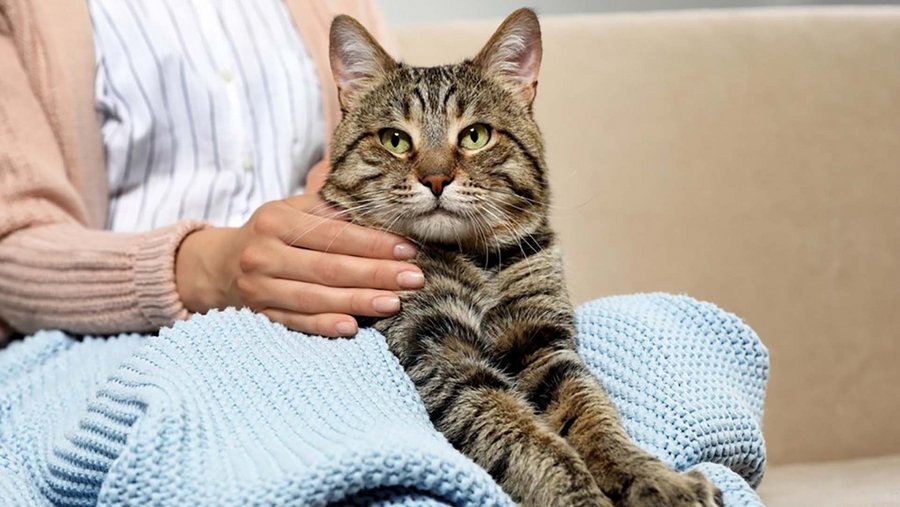Most cats prefer to be pet from where I call the collar up. They like to be scratched under their collar, up around the ears, sometimes on the ears, on the cheeks, and under the chin (they love that one). They also sometimes like to be pet on their chest, but generally, they don’t like pets as much below the collar.
I think a lot of people who aren’t familiar with cats walk up to a cat and stroke down their back. And maybe that’s because they’re worried about getting bitten and want to stay away from the mouth—who knows. But collar up is the safe way to go, especially if you’re interacting with a new cat you’re unfamiliar with.

This is a big difference between cats and dogs. The safe petting zones for a dog are pretty much everywhere. Anywhere you touch a dog, they’ll be like, “Yeah, that’s cool, that’s awesome!” For cats, as a general rule, they don’t really like their legs, stomach, sides, or back touched, with the area near the base of the tail sometimes being an exception. Plus, paws have lots of nerve receptors, so even though those toe beans are cute, they’re cuter if you stay away from them. Their stomach is another vulnerable area you should stay away from, unless your cat or kitten in particular happens to like it.
You’ll be able to tell when you’re petting the right spot: a happy cat will look relaxed, they’ll purr or bunt you, or maybe their tail will be upright.
So, your bonding tip: when you’re petting your cat, stay collar up, and they’ll enjoy it more. And, refer back to our bonding tip a couple weeks ago, where we set a five-second petting rule: only pet for a short time, and then take a break to see if they want to continue. Until next time, keep calm and purr on!

